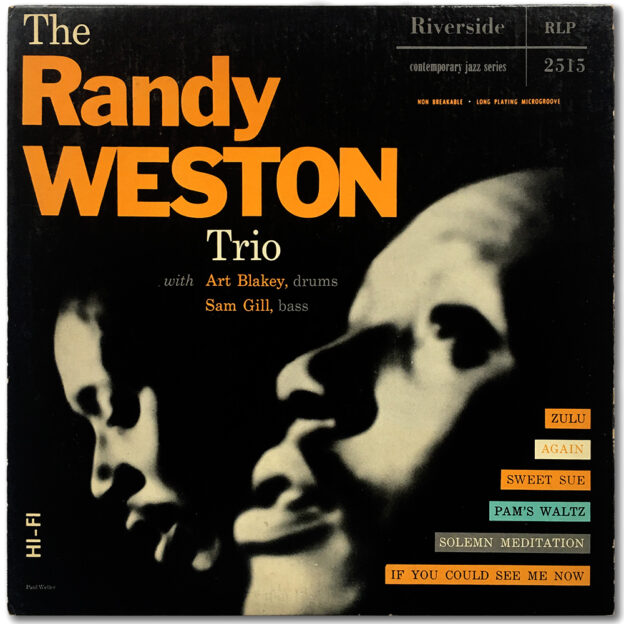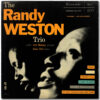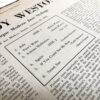Personnel:
- Randy Weston, piano
- Sam Gill, bass
- Art Blakey, drums
Recorded January 25, 1955 at Van Gelder Studio, Hackensack, New Jersey
| 1 | Zulu | |
| 2 | Pam’s Waltz | |
| 3 | Solemn Meditation | |
| 4 | Again | |
| 5 | If You Could See Me Now | |
| 6 | Sweet Sue |
Selection:
“Zulu” (Weston)
Among those albums was this set by Brooklyn pianist Randy Weston, a giant of the keyboard and, standing six-foot-seven, a giant in real life too. In a way, this is “the poor man’s Herbie Nichols”. I don’t mean to discredit Weston in any way when I say that, nor to make any sort of pseudo-scholarly comparison of the two, but while this LP costed a fraction of what an original Nichols ten-inch on Blue Note would (catalog numbers 5068/9), it boasts the same smokey sound, which surely has much to do with the fact that the albums were only recorded four months apart in 1955 and both are Hackensack trio dates featuring Art Blakey on drums.
These early Riverside ten-inches weren’t mastered very hot, so I was lucky to find a clean and quiet copy. And while Van Gelder did not master this album, he manages to make himself heard as the date’s recording engineer nonetheless.
I recently finished Robin Kelley’s Thelonious Monk biography and was delighted to learn of Monk’s close relationship with Weston. I don’t necessarily hear an influence of one on the other, but I’m not a jazz scholar either. My favorite tracks here are the more upbeat ones where Blakey favors sticks over brushes (“Zulu”, “Sweet Sue”, “Solemn Meditation”). Hopefully as I continue to expand my modern jazz palette I will find more gems like this from the early to mid ’50s, an era in the music’s recorded history that has perhaps been somewhat overlooked due to the fact that the classic twelve-inch LP format hadn’t yet arrived as the industry standard.







